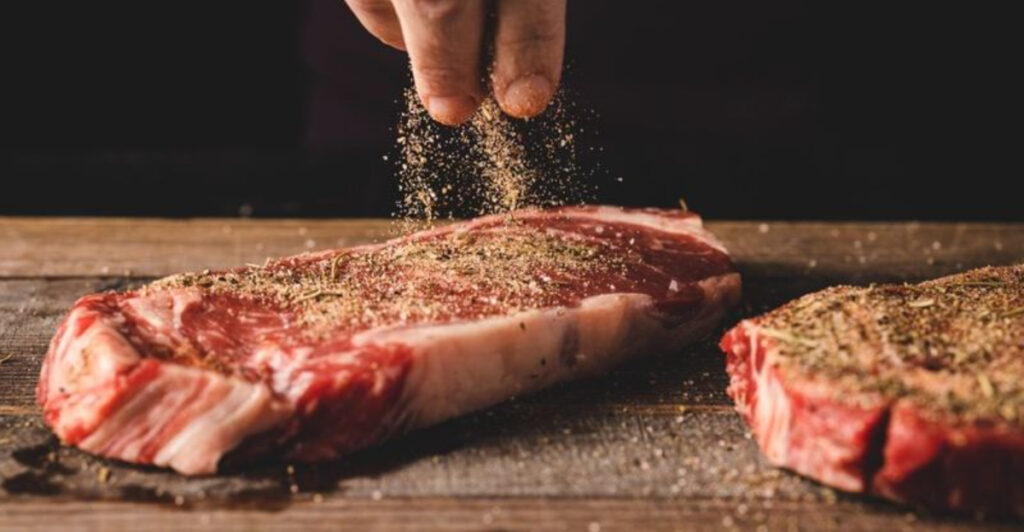Seasoning a steak seems simple… until you ruin a $30 ribeye with rookie mistakes. After plenty of trial (and a few charred errors), I’ve figured out what not to do—and what actually makes steakhouse-level flavor at home.
1. Using Table Salt
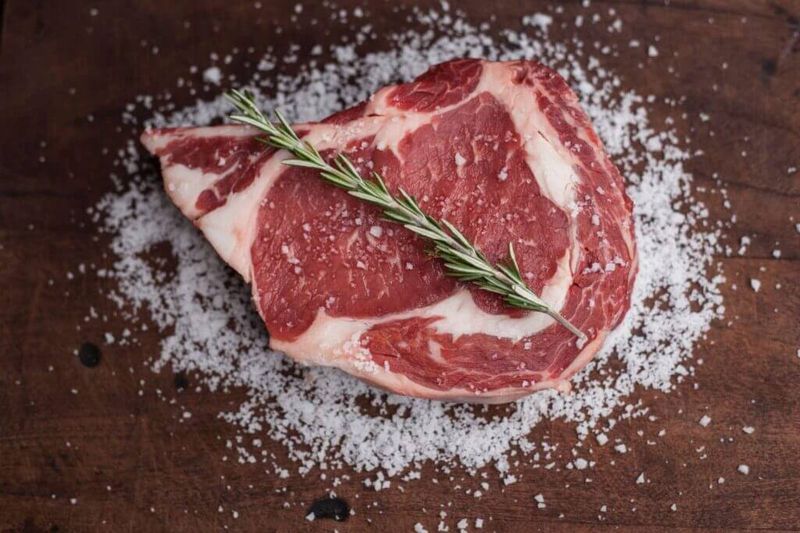
The choice of salt can dramatically alter the outcome of your steak. Table salt, with its fine grains, tends to clump and doesn’t distribute evenly, leaving patches of under or over-seasoned meat.
Kosher or sea salt offers a better texture for even coverage.
These coarser grains not only adhere beautifully to the meat but also enhance flavor without overpowering. The next time you’re seasoning a steak, reach for kosher or sea salt, and you’ll notice the difference in taste and texture, elevating the dish to restaurant-quality perfection.
2. Skipping the Rest Time After Seasoning
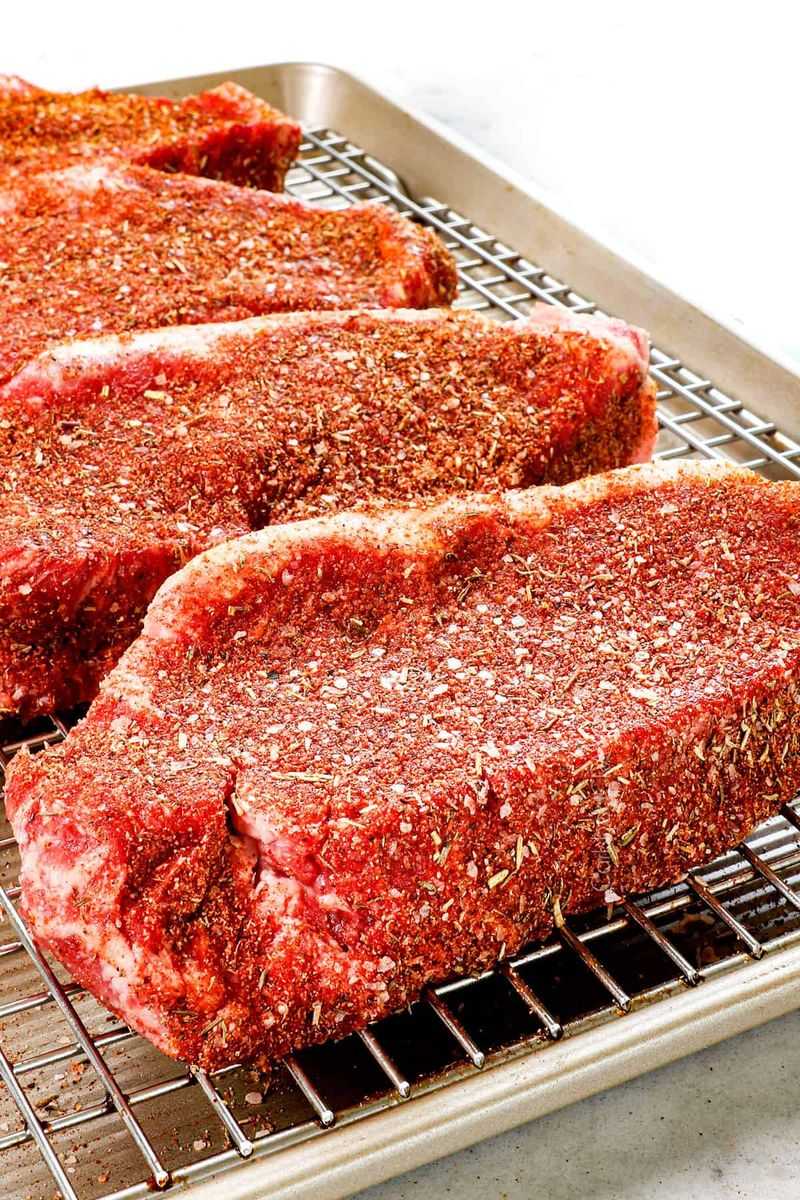
Patience pays off in seasoning a steak. Rushing from seasoning to searing can draw moisture out too quickly, affecting the steak’s tenderness.
Allowing the steak to rest for at least 40 minutes post-seasoning enables the flavors to meld and the salt to work its tenderizing magic.
During this time, moisture redistributes, ensuring a juicier bite. Consider this step a marination period for maximum flavor infusion. Adhering to this simple practice can distinguish between a dry, tough steak and one that’s mouthwateringly tender, making it well worth the wait.
3. Seasoning Too Late
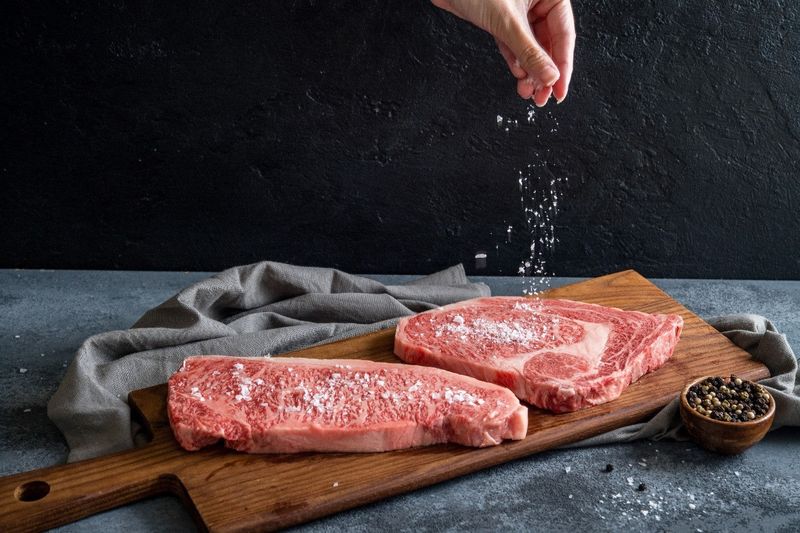
Timing is everything when it comes to seasoning steak. A common mistake is waiting until the steak is sizzling in the pan before reaching for the salt. This delay means missing a crucial window for the salt to penetrate and tenderize the meat.
Without sufficient time, salt just sits on the surface, missing the magic of transforming the steak’s texture. Think of it like a marination process.
Next time, give your steak the royal treatment by salting it well in advance. It’s a simple step, yet it makes all the difference between a bland bite and a flavorful feast.
4. Adding Sugar-Based Rubs Too Early
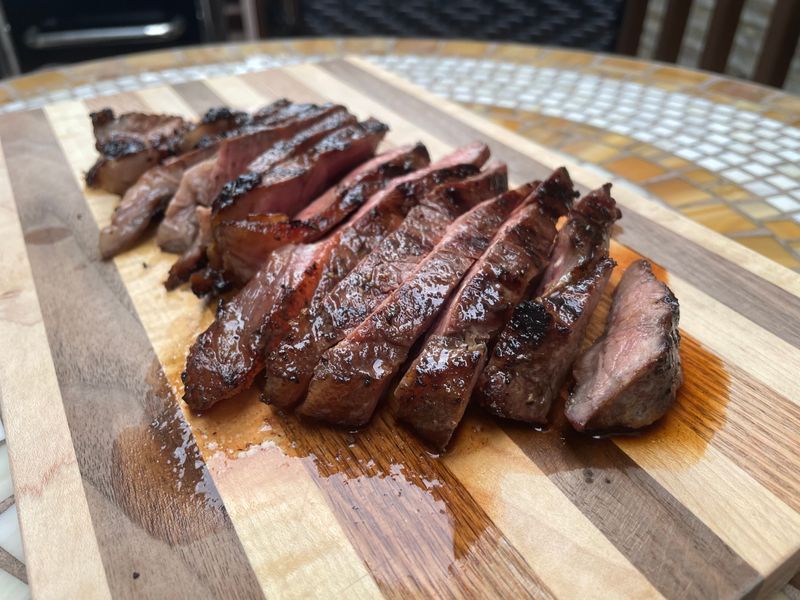
Timing is crucial with sugar-based rubs. Applying them too early can result in the sugar burning before the steak is cooked through, leading to a bitter taste.
Instead, save those sweet glazes and rubs for the final stages of cooking.
This strategy ensures a caramelized crust without sacrificing the steak’s inner juiciness. By waiting until the last few minutes to apply sugar-based seasonings, you achieve a perfect balance of flavors, avoiding the pitfalls of premature sweetness turning to bitterness.
5. Only Seasoning One Side
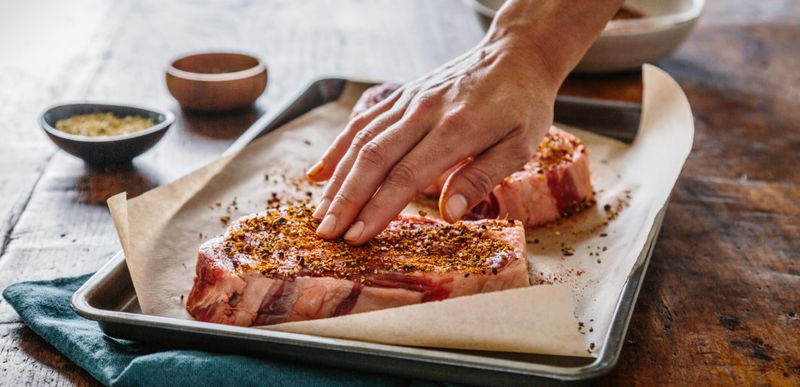
Every steak deserves equal attention on both sides. Overlooking this can lead to an uneven flavor profile, with one side tasting perfect and the other bland.
To achieve a balanced taste, approach each side with the same level of care. Roll the steak in seasoning to ensure every bite is infused with flavor.
This simple yet effective practice guarantees that every mouthful offers a consistent, delectable taste, making each side equally delicious and none left in the shadows of seasoning neglect.
6. Marinating Instead of Seasoning
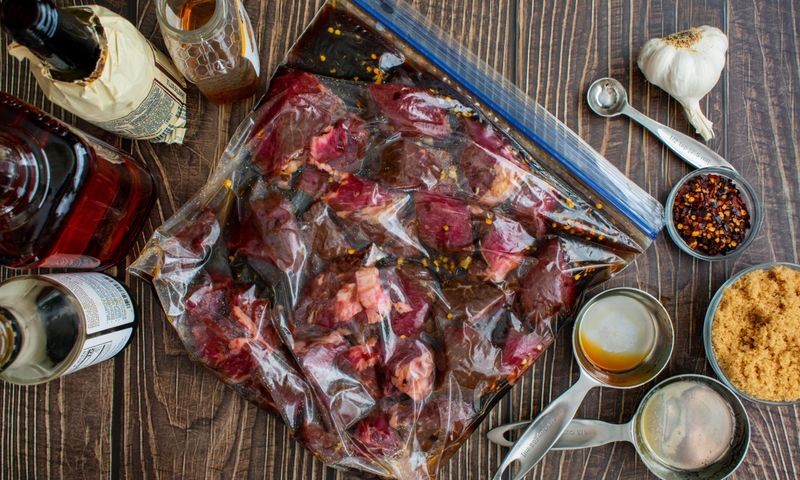
Marinating can be tempting, but it’s often unnecessary for tender cuts. While marinades can add flavor, they may overshadow the natural taste of premium steaks.
Instead, rely on a classic trio: salt, pepper, and patience. These basics highlight the meat’s inherent richness.
Marinating is best reserved for tougher cuts needing tenderness. For prime steaks, seasoning suffices, preserving the integrity and unique flavors that make each cut special. This approach respects the meat’s quality, allowing its natural deliciousness to shine through without being masked by excessive marinades.
7. Overcomplicating It
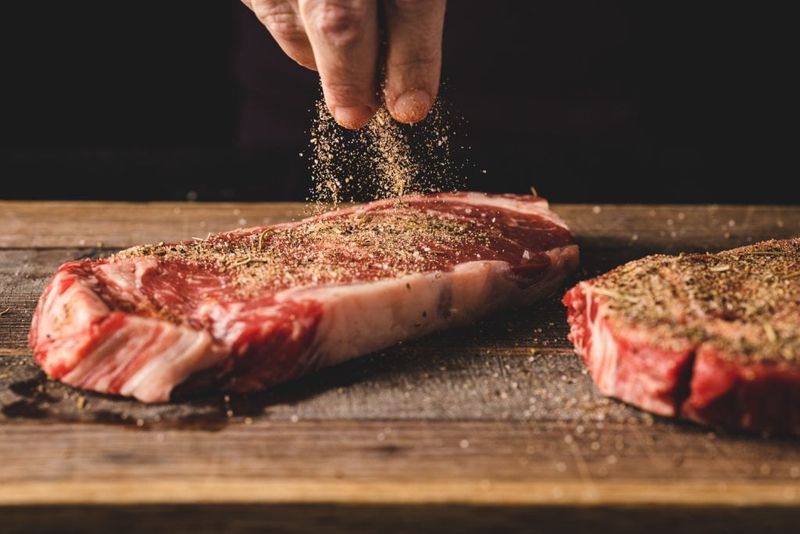
Simplicity often holds the key to success, especially in steak seasoning. Overloading your steak with a dozen spices can distract from the natural flavors of the meat.
Instead of enhancing, too many seasonings can mask and muddle.
The beauty of a well-cooked steak is in its rich, beefy taste, so embrace restraint. Focus on the basics: salt, pepper, and perhaps a hint of garlic or herbs. Let these simple ingredients work their magic without extra fanfare, and your steak will shine with its unadulterated essence.
1. Dry Brine with Kosher Salt
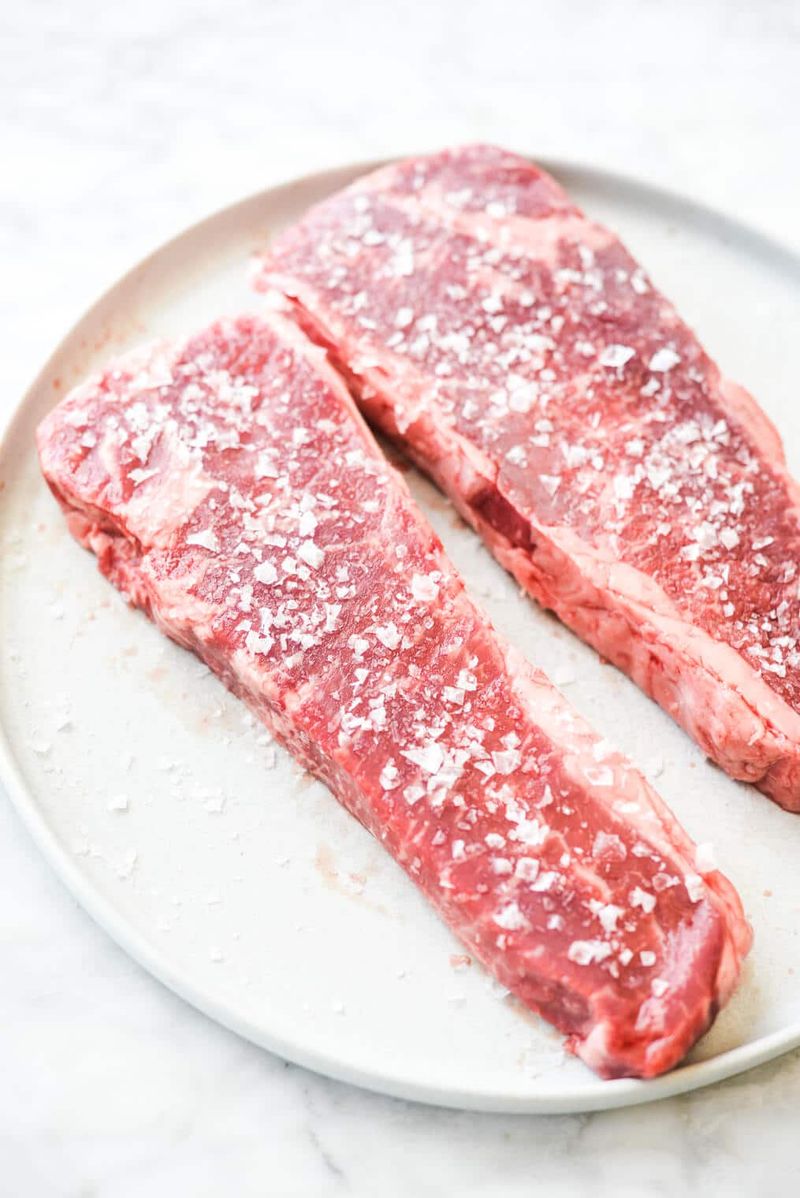
Consider dry brining your steak with kosher salt. This technique involves generously salting the steak and leaving it uncovered in the fridge overnight.
The results? A tender, flavorful steak that’s seasoned from the inside out.
The salt draws out moisture, which then reabsorbs, carrying the salt deeper into the meat. This not only tenderizes but infuses the steak with a deeply satisfying flavor, making every bite a savory delight. It’s a simple method that transforms your home-cooked steak into a restaurant-level experience.
2. Freshly Cracked Black Pepper Before or After?
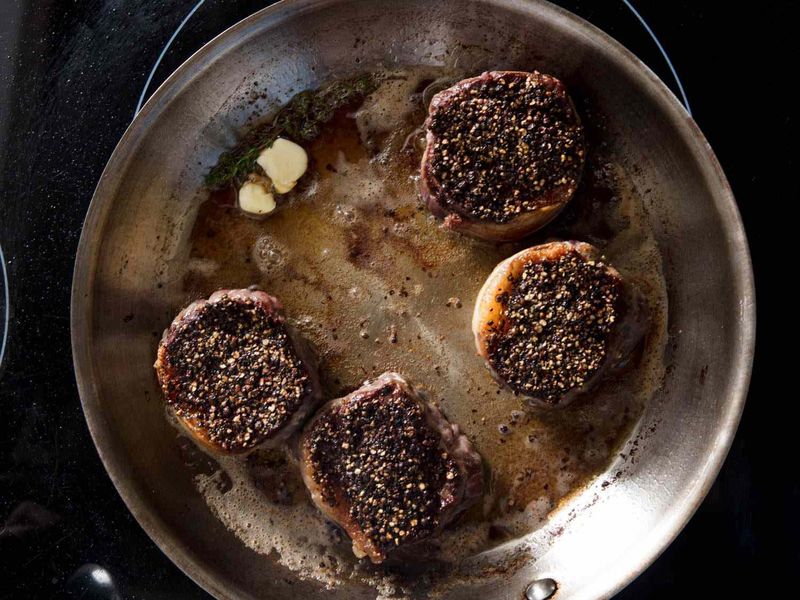
The timing of freshly cracked black pepper depends on your cooking method. If you’re using high heat, like searing, add the pepper after cooking to avoid burning it.
For grilling at a lower heat, seasoning with pepper beforehand is perfectly fine.
This small adjustment makes a significant difference in flavor, allowing the pepper to enhance rather than overpower. Whether before or after, freshly cracked pepper adds a robust, aromatic finish that complements the steak’s richness beautifully, enhancing the overall taste experience.
3. Use Garlic Powder for Umami
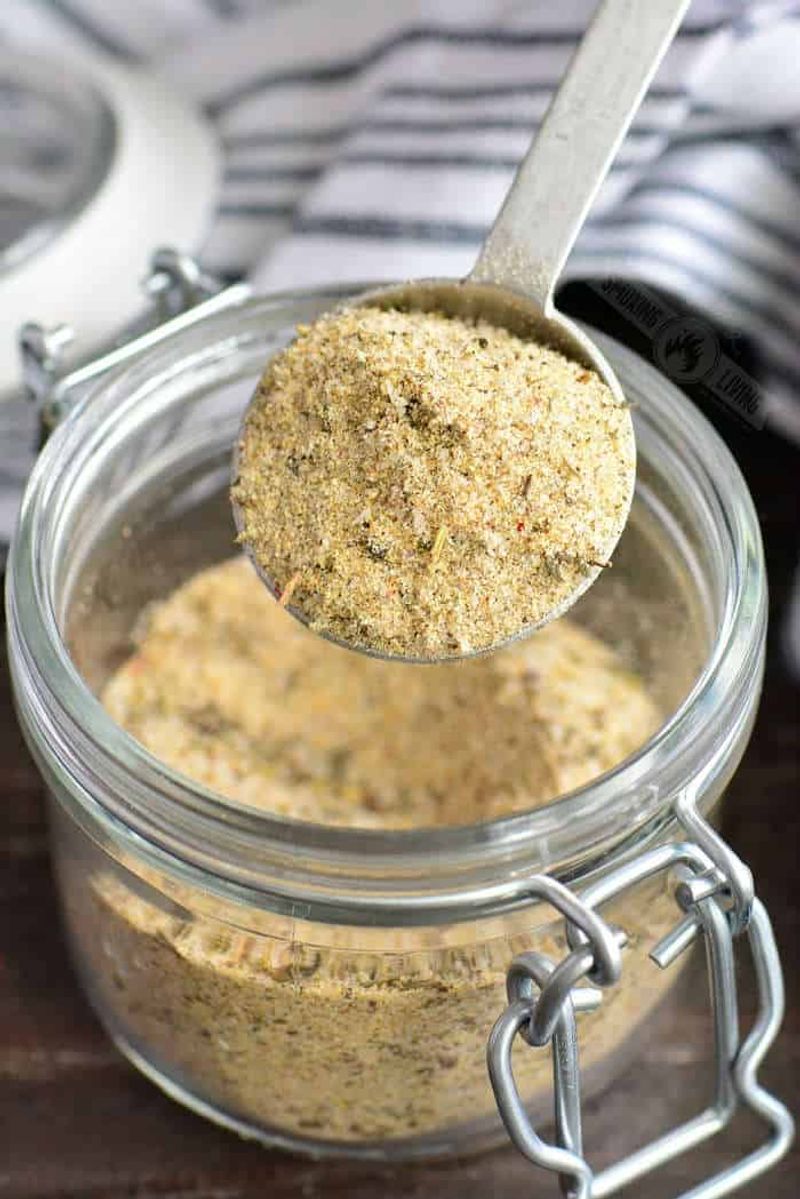
Garlic powder can be a game-changer in steak seasoning. It adds a subtle umami kick that enhances overall flavor without overwhelming it, unlike garlic salt which can be too intense.
A pinch sprinkled over the steak melds seamlessly with the meat’s natural juices.
This technique builds complexity and depth, elevating a simple seasoning into something extraordinary. By using garlic powder, you introduce a savory note that complements the steak, transforming it into a dish that’s as compelling as any restaurant offering, right in your own kitchen.
4. Don’t Forget the Edges
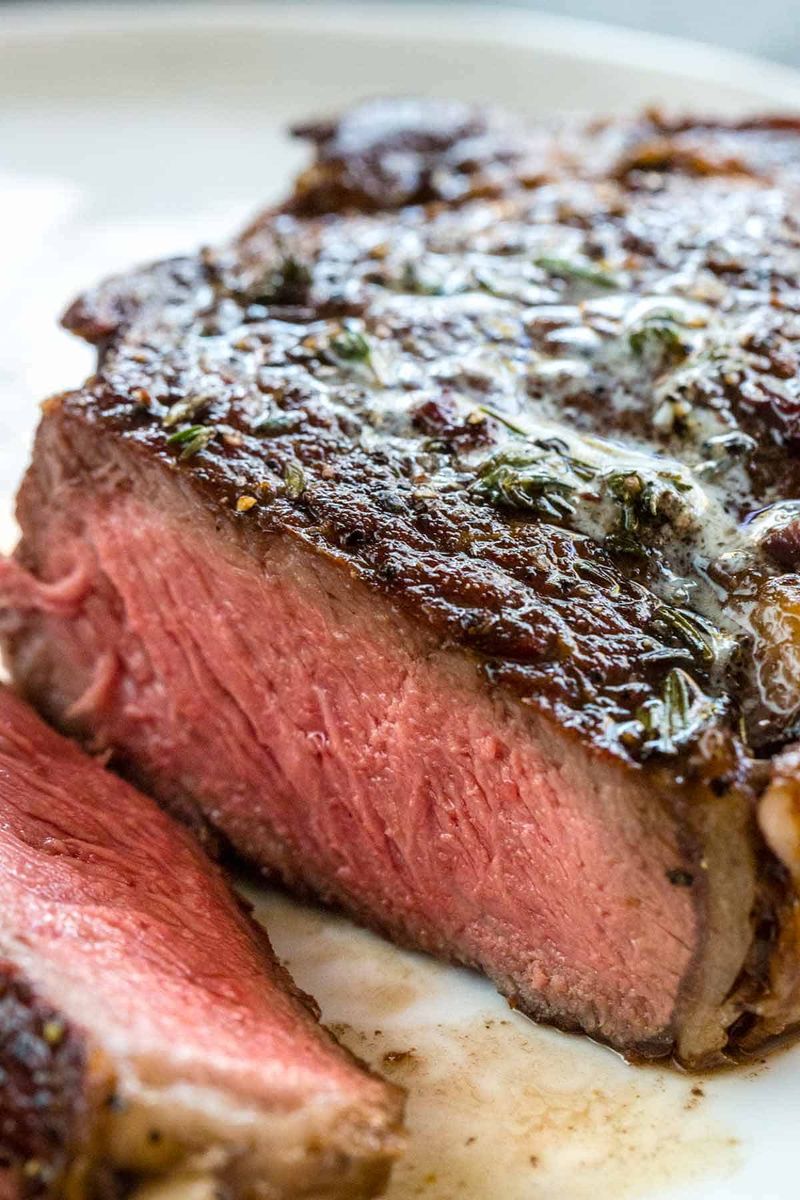
Seasoning the edges of your steak? Absolutely essential. Ignoring this part means missing out on flavor opportunities.
By rolling the steak in seasoning, every surface is treated to a flavorful coating. This ensures that even the most unassuming bites are richly seasoned.
This attention to detail makes for a thoroughly enjoyable steak experience, where each slice delivers an explosion of taste. Don’t overlook the importance of well-seasoned edges—they contribute significantly to the dish’s overall appeal and satisfaction.
5. Pat Dry Before You Cook
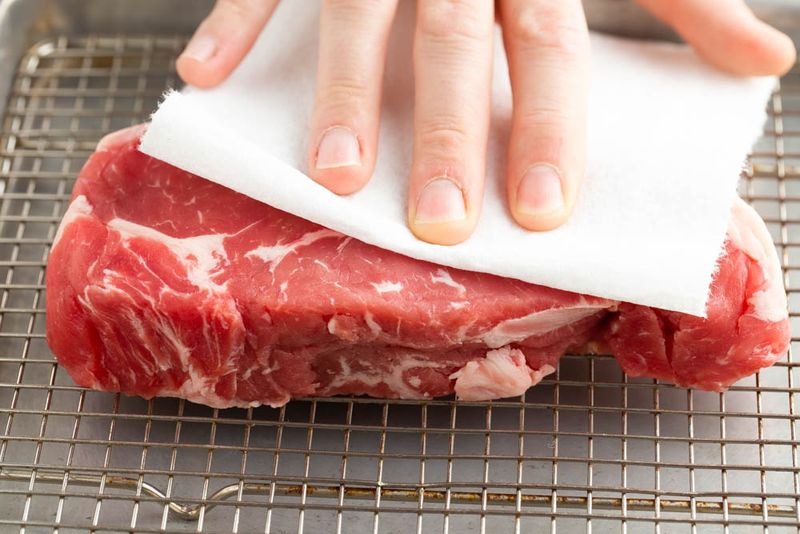
Moisture is the enemy when aiming for that perfect steak crust. Before cooking, pat your steak dry with paper towels.
This step removes excess moisture, which can steam rather than sear the meat.
A dry surface allows the steak to develop a beautifully browned crust as it hits the hot pan. This technique is crucial for achieving that coveted steakhouse-style sear, enhancing both texture and flavor. By starting with a dry steak, you set the stage for culinary success, ensuring a mouthwatering crust with every bite.
6. Try a Touch of MSG

MSG can be a secret weapon in steak seasoning. Just a touch can amplify the savory, meaty flavors, especially in leaner cuts.
It’s often misunderstood, but when used sparingly, it enhances the steak’s natural taste without adding any noticeable flavor of its own.
Embrace MSG’s ability to boost umami, making your steak irresistibly delicious. The result is a richer, more satisfying culinary experience that brings out the best in every bite, promising a steak that’s both deeply flavorful and memorable.
7. Finish with a Compound Butter
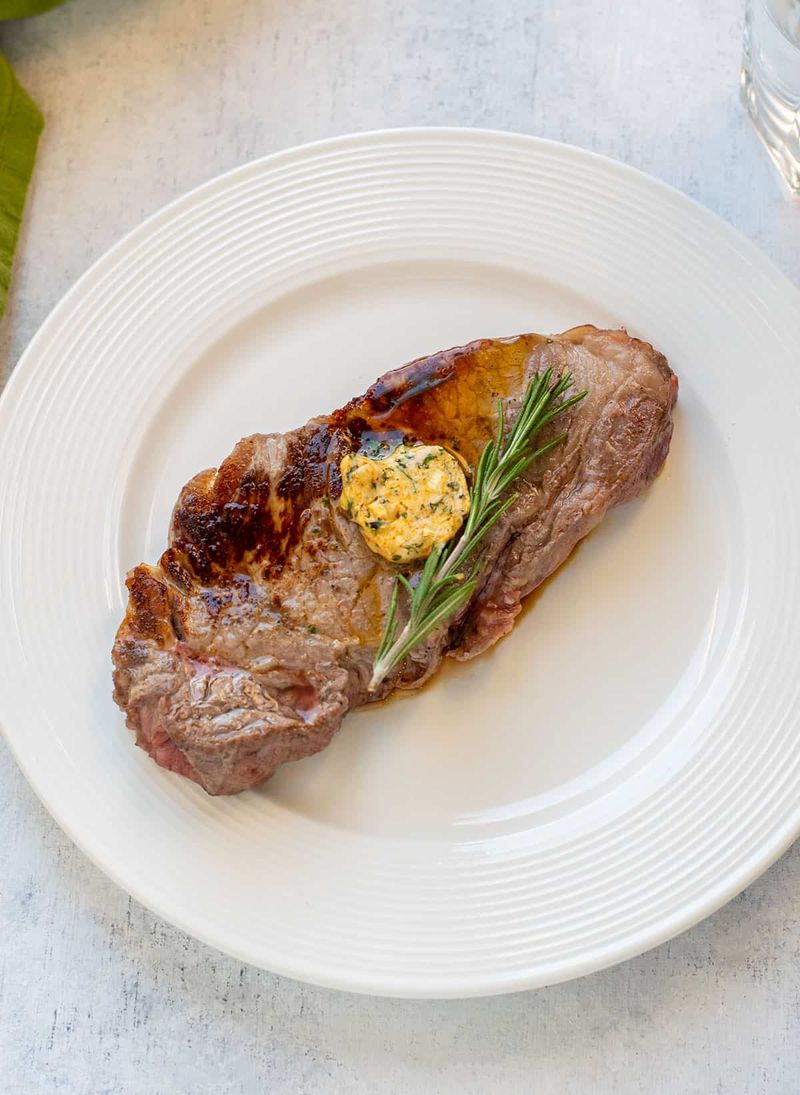
Top your cooked steak with a pat of compound butter for an indulgent finish. Mix herbs, garlic, and salt into softened butter, then chill.
Once your steak is cooked, place the butter on top to melt into a luxurious sauce.
This final touch enriches the steak’s flavor profile, adding layers of creamy, herby goodness. Each bite becomes a decadent delight, as the butter seeps into the meat, enhancing its succulence and making every mouthful a blissful experience, perfect for any special occasion.
8. Add a Dash of Smoked Paprika
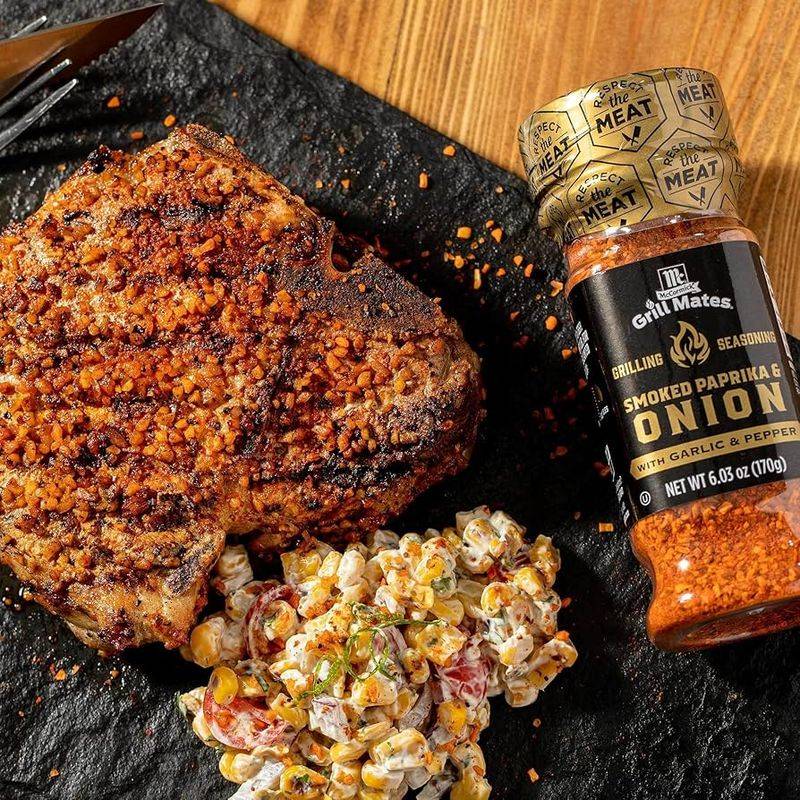
Introduce a hint of smokiness with a dash of smoked paprika. This spice adds a subtle depth that complements the steak without overpowering it.
Its smoky flavor enriches the meat, bringing a unique yet harmonious note to the table.
A small sprinkle goes a long way in enhancing the steak’s overall flavor profile, providing a whisper of intrigue that elevates a simple steak into something extraordinary. Embrace smoked paprika for an unexpected twist that delights the palate and enhances your culinary repertoire.
9. Experiment with Coffee or Cocoa Rubs
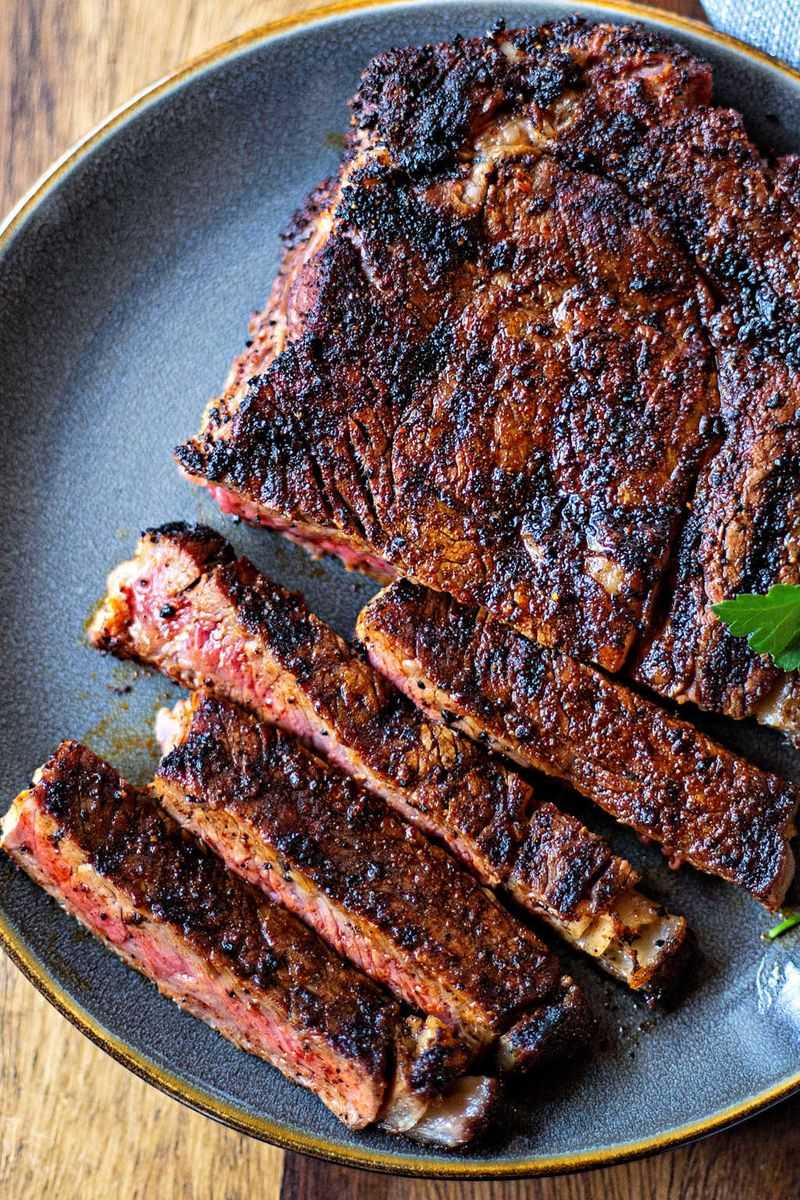
Bold flavors can transform a steak into a culinary adventure. Coffee or cocoa rubs add a unique depth and richness that’s both surprising and delightful.
These ingredients, though unconventional, help create a robust crust with a hint of bitterness that balances the meat’s natural sweetness.
The result is a steak that’s layered with complex flavors, offering a memorable dining experience. Dare to experiment with these rubs, and discover how they can take your steak to new flavor heights, ensuring it stands out with every savory bite.
10. Use a Cast Iron Pan for a Crusty Finish
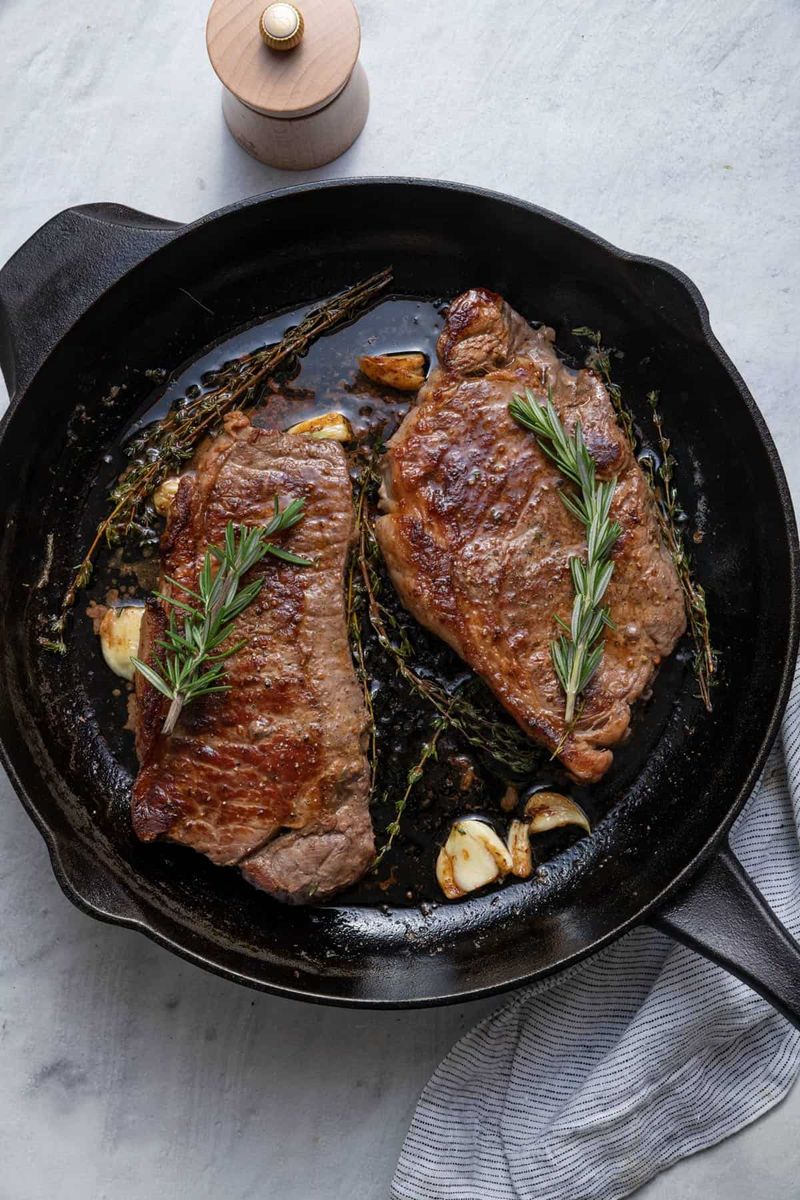
The right equipment can make all the difference. A cast iron pan is your best ally for achieving a perfect steak crust.
Its ability to hold and evenly distribute heat provides the ideal environment for searing.
As the steak meets the pan’s hot surface, it develops a beautifully caramelized crust that enhances texture and flavor. This cooking method is crucial for replicating the steakhouse experience at home, giving your steak that professional, mouthwatering finish that’s both satisfying and impressive.
11. Let It Rest Before Slicing
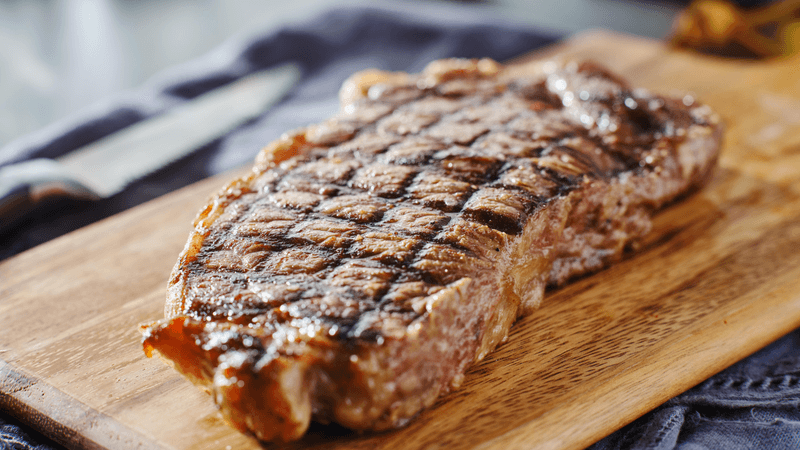
Resting your steak post-cooking is just as important as seasoning it. This pause allows juices to redistribute throughout the meat, ensuring every bite is tender and juicy.
Cutting too soon can result in a loss of precious moisture.
Waiting just ten minutes before slicing makes all the difference, preserving the steak’s lusciousness. This simple step guarantees a rewarding eating experience, where the steak’s full flavor and texture can be enjoyed to the fullest, making patience an essential part of the process.

